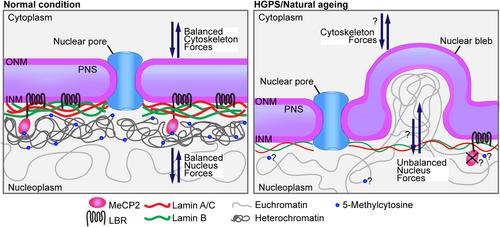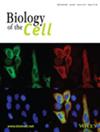Chromatin epigenetics and nuclear lamina keep the nucleus in shape: Examples from natural and accelerated aging
Abstract
As the repository of genetic information, the cell nucleus must protect DNA integrity from mechanical stresses. The nuclear lamina, which resides within the nuclear envelope (NE), is made up of lamins, intermediate filaments bound to DNA. The nuclear lamina provides the nucleus with the ability to deal with inward as well as outward mechanical stimuli. Chromatin, in turn, through its degrees of compaction, shares this role with the nuclear lamina, thus, ensuring the plasticity of the nucleus. Perturbation of chromatin condensation or the nuclear lamina has been linked to a plethora of biological conditions, that range from cancer and genetic diseases (laminopathies) to aging, both natural and accelerated, such as the case of Hutchinson-Gilford Progeria Syndrome (HGPS). From the experimental results accumulated so far on the topic, a direct link between variations of the epigenetic pattern and nuclear lamina structure would be suggested, however, it has never been clarified thoroughly. This relationship, instead, has a downstream important implication on nucleus shape, genome preservation, force sensing, and, ultimately, aging-related disease onset. With this review, we aim to collect recent studies on the importance of both nuclear lamina components and chromatin status in nuclear mechanics. We also aim to bring to light evidence of the link between DNA methylation and nuclear lamina in natural and accelerated aging.


 求助内容:
求助内容: 应助结果提醒方式:
应助结果提醒方式:


